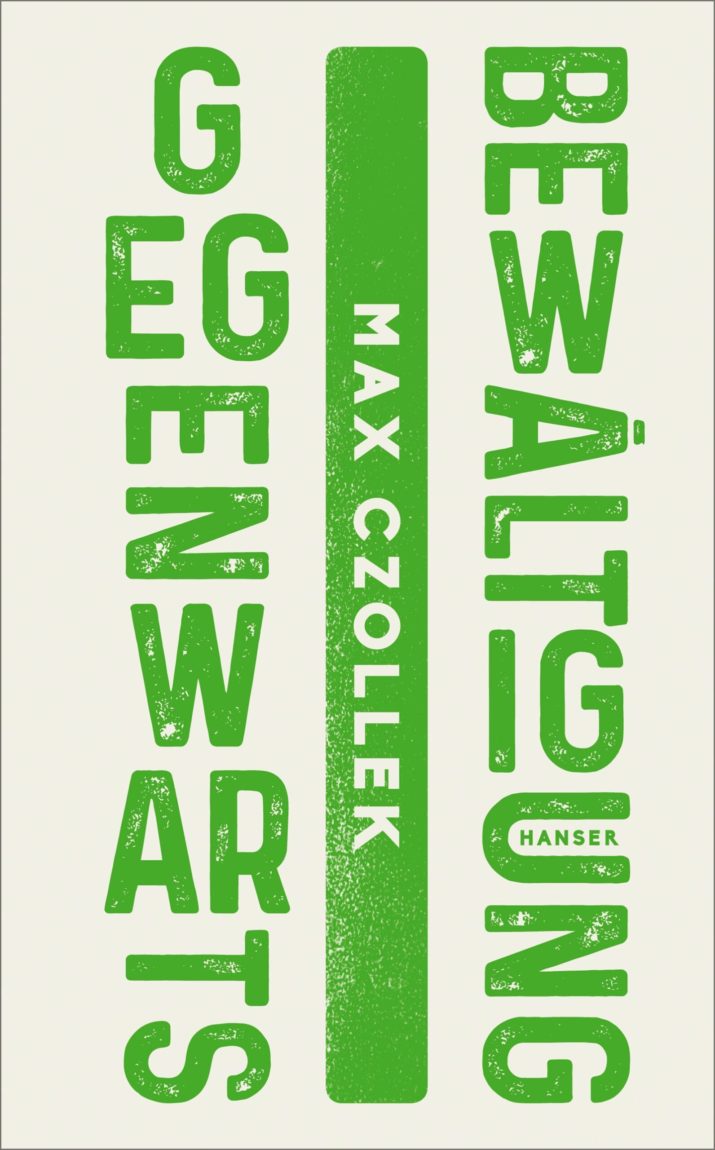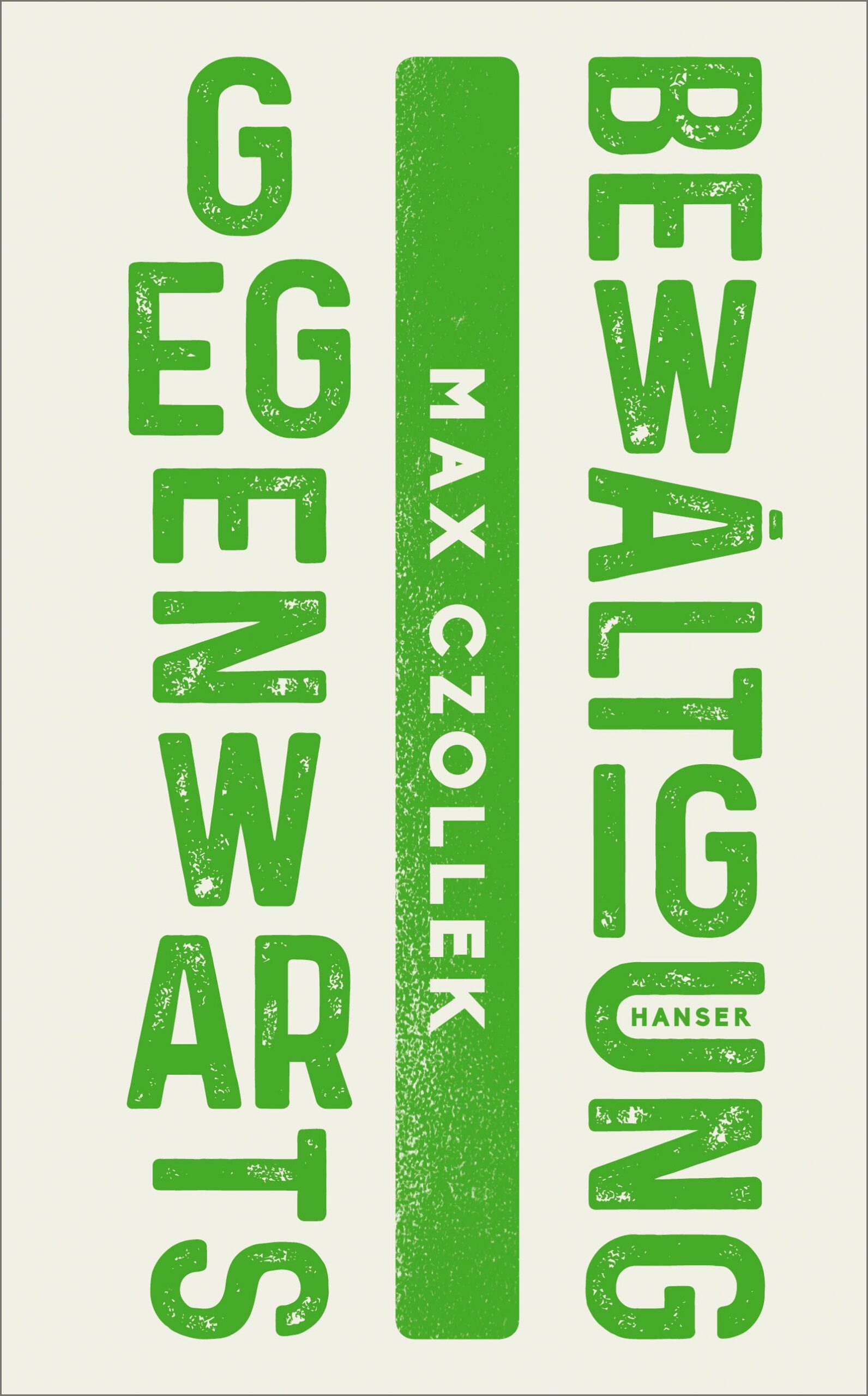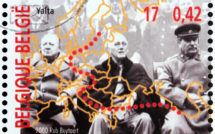

Max Czollek’s first book of social commentary―the bestselling Desintegriert Euch! (Disintegrate Yourselves!)―pushed back against the dominant trope of integration as the primary framework for understanding immigrant incorporation and German national identity. The book was so popular that it garnered at least eight print runs and earned Czollek a 2020 author profile in The New York Times. Gegenwartsbewältigung (Coming to Terms with the Present), his second book of political commentary, critiques the performative qualities of German memory culture, examines the historical reasons for the persistence of the German far-right since the end of World War II, and explores the relationship of literature and art to the political concerns of the present in superdiverse Germany.
Czollek’s books fall neatly in line with a genre of political nonfiction that has steered German political commentary at least since the 1990s. I have studied this genre for more than a decade and these narratives exist across the political spectrum. Some of the most recent examples of this genre from the political left, which is where Czollek positions himself, include Ich bin von hier. Hört auf zu fragen! (I’m from Here – Stop Asking!) by Ferda Ataman, Eure Heimat ist unser Albtraum (Your Homeland is Our Nightmare), a collection of essays edited by Fatma Aydemir and Hengameh Yaghoobifarah, and Das Integrationsparadox (The Integration Paradox) by Aladin El-Mafaalani. Studying these books is critical for understanding how political critique of domestic politics appears in specifically German cultural forms and reflects broader conversations about diversity and identity in a German idiom. If we frame the genre in this way, one of the critical questions becomes: who is the audience for such a book and how does the author envision a program of political change within their narrative? No polemic is written as a neutral tome predicated on observation from a distance. Obviously, Czollek wrote this book for a sympathetic left-wing (general) audience that is comfortable with irony and sarcasm, as illustrated by the conversational style and persistent wisecracks. It is also very clear that Czollek writes in a space that spans both academic arguments about identity and history and his own practice of performance.
Gegenwartsbewältigung begins with an introduction about “coming to terms with the present,” a play on words Czollek attributes to his colleague Daniel Kahn. The term invokes the German Vergangenheitsbewältigung (coming to terms with the past) and critiques the performativity of that form of memory culture because it relegates right-wing violence and fascism to Germany’s Nazi history. Right-wing violence, however, is anything but relegated to the past, and the driving question of the book is why conservative approaches to national identity persist into the quite different present. Czollek asks: why have certain forms of social dominance persisted despite radical changes to social reality? (21) This question is a worthy one, and this framing motivates current scholarly research in fields that span several disciplines. The majority of Gegenwartsbewältigung uses various thematic frames to analyze the historical precedents for and contemporary developments in the dominant cultural idioms that structure German national identity. Czollek’s first chapter is about the ideologies of Heimat (homeland) embedded in Erinnerungskultur (a culture of memory); the second is a critique of the discourse of Leitkultur (leading culture) as a form of German cultural dominance. In the conceptually stronger chapter about postwar literature and the role of language that follows, he takes up how the mainstream literary scene was complicit in re-stabilizing German national identity as “good” and “innocent” after the Holocaust (68). This chapter leads easily into the next, in which he examines the political role of poetry in the 2017 Gomringer Debate, where students voted for a (mysogynistic?) poem painted on the facade of a building at Alice Salomon University in Berlin to be removed (77). Czollek uses this historical debate successfully as a foil for the contemporary far-right denigration of cultural institutions and political correctness. At this point, the focus of the book moves from historical critique of discourses and aesthetics into a polemic against the tokenization of identity (89-104), right-wing false equivalencies (105-120), revising the narrative of German unification as a return to an ethnonational German identity (121-138), and the explicitly intersectional critique that comprises the final three chapters of the book. Czollek juxtaposes the significance of the 9th of November 1933 (Kristallnacht) and the 9th of November 1989 (the Fall of the Wall) with the performative actions of the Zentrum für politische Schönheit (ZPS, Center for Political Beauty), examines critical intersectionality in a German context, and envisions a “Jewish-Muslim Leitkultur.”
Many scholars and cultural commentators have remarked that conversations in Germany and Europe about race and ethnicity, intersectionality, national identity, and coalitional politics generally lag behind those happening in North America. Research has given us some evidence to support this claim, especially in the work of Fatima El-Tayeb. Given the emergence of decolonial thought from scholars in South America, Africa, India, and the Caribbean, North American scholarship no longer seems like the litmus test for radical thought. In this scholarly context, Czollek’s political arguments seem, well… a bit behind the times. In a German domestic context, however, they show how notions of politicized identity are finally moving from BPOC communities, academia, and left-wing activism into a larger German audience ready to engage with these political ideas. What might be disappointing is that none of these polemicists on the left will ever approach the commercial success of far-right authors like Thilo Sarrazin. This reality proves Czollek’s assertion that right-wing ideologies in Germany have consistently and persistently been present in the present, a notion with which most scholars researching German discourses about national identity and far-right political movements would agree.
Czollek is at his best and most convincing when he writes about specific episodes in German history, such as the poem on the walls of the Alice Salomon University or the comparisons between East and West German identity in the post-1989 Federal Republic. Having likely worked out many of these ideas in Desintegriert Euch!, Czollek’s interpretations of the psychological function of Leitkultur-discourse and integration politics as performative methods to maintain cultural and linguistic dominance are quite insightful – and cheeky. He also critiques the performative activist actions of the ZPS performance group. The Center for Political Beauty (ZPS) creates installations that present some of the most grotesque political decisions framed ironically as “political beauty,” and Czollek’s critiques of this group show some of the disagreements across the left. Czollek accurately points out the inconsistencies in these provocative installations, which he argues are rarely thought through to the end and often do not include sufficient consideration for the groups on whose behalf the ZPS purportedly advocates.
What presented some theoretical challenges for me, however, was precisely this chapter about ZPS, entitled “Die Politische Schönheit des 9. Novembers” (The Political Beauty of the 9th of November, 139-152). Czollek frames this essay using May Ayim and Peggy Piesche’s writings to critique the national hagiography of November 9, 1989 as a day of national redemption. While Ayim and Piesche’s texts fit in perfectly with his critique of German identity in the chapters about East and West German antifascism or critical intersectionality and coalition building, this secondary literature is somewhat out of place as a frame for the ZPS. Effectively, Czollek’s subtly codes his critique of the ZPS as an issue of whiteness, even though he never uses the term. Instead, he describes the event of unwrapping a “Resistance Column” next to the Federal Chancellery as a performance planned “by Germans for Germans” that was “arranged for the keyboard of the culturally dominant trauma piano” (150). In this roundabout way, Czollek critiques the ZPS for being a white organization and re-centering white subjects in their purportedly anti-racist performance actions. This particular action violates the Jewish practices of respect for the dead, he argues, and thus, does not incorporate a Jewish perspective, frustrating ZPS’s attempt to critique the Holocaust as the “Glutkern der Bundesrepublik Deutschland” (Glowing Nucleus of the FRG, 149).
While some critics will argue that whiteness is an inadequate category for application in Germany (I do not agree), if Czollek had taken into account how whiteness has different categorical identities across the spectrum of what Nell Irvin Painter calls the “white races” (emphasis on the plural, which can include Eastern Europeans, Germans of a German background, and Jewish-Germans), it would provide him the opportunity to analyze how white Germanness functions to maintain dominance in the work of the ZPS by forcefully ignoring the specificities of difference. While Ayim and Piesche’s works are essential to Czollek’s overall project and I am not critical of his interpretation of the significance of their work, which is undisputed, I am critical of how he uses their writing about East Germany and the historical events of November 9th to frame this particular discussion about the ZPS. The majority of the ZPS actions have focused on German responses to contemporary refugee movement rather than coalitional politics (147). This is admittedly part of Czollek’s critique. But it makes me uneasy to consider that Czollek might be mobilizing Ayim and Piesche’s identities as Black scholars in this particular chapter to understand racialization in ways that eschew a more complex understanding of whiteness and dominance, which is Czollek’s purported goal for a book that focuses heavily on the dynamics of (white) cultural hegemony and nationalistic violence.
Finally, while I agree with Czollek that coalitional politics across groups is the necessary outcome of any politics of identity, this manifesto remains vague as to how such coalitions are formed and what their political praxis might include. Rather than pointing out shared needs (people using wheelchairs and strollers face the same challenges coming out of the subway, for instance), Czollek relies on a paradigm of what we in the US call “checking your privilege.” But being cognizant of one’s social position across and through multiple hierarchies, including one’s intersectional identities, is not a political program in and of itself: it is a process of reflection required to understand the self. Ultimately understanding the self may be the inherent limit of a project on understanding national identity. Maybe he is saving the specifics of his political action plan for his next book. I will go ahead and suggest the title: Organisiert Euch! (Organize!)
Johanna Schuster-Craig is an Assistant Professor of German and Global Studies at Michigan State University. Johanna is currently at work on a book about the history of integration politics in Germany.
Gegenwartsbewältigung
By Max Czollek
Publisher: Hanser Literaturverlage
Paberback / 205 pages / 2020
ISBN: 978-3-446-26772-5
References:
Ataman, Ferda. 2000. Ich bin von hier. Hört auf zu fragen! Frankfurt am Main: S. Fischer Verlag.
Aydemir, Fatma, and Hengameh Yaghoobifarah. 2019. Eure Heimat ist unser Albtraum: Mit Beiträgen von Sasha Marianna Salzmann, Sharon Dodua Otoo, Max Czollek, Mithu Sanyal, Olga Grjasnowa, Margarete Stokowski uvm. Berlin: Ullstein.
El-Mafaalani, Aladin. 2018. Das Integrationsparadox: Warum gelungene Integration zu mehr Konflikten führt. Cologne: Kiepenheuer & Witsch.
Published on February 9, 2021.




